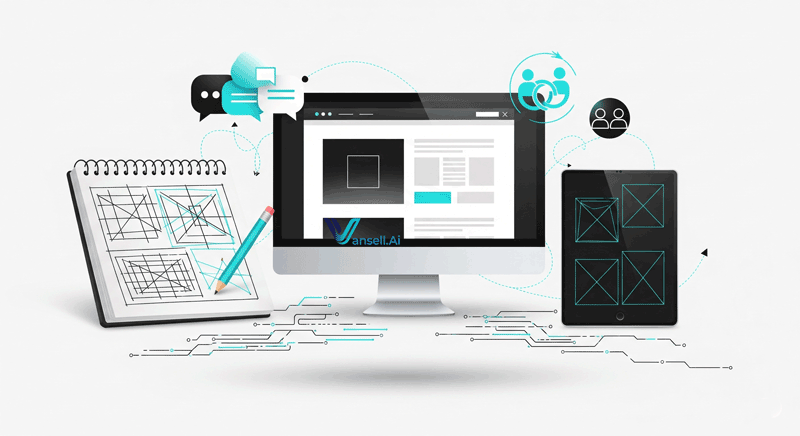Complete Web Design Process: From Idea to Launch
Step-by-step guide to creating high-performing websites — from project scope and design to launch and ongoing maintenance.

- hirbodchoobak@gmail.com
- ⏱ 8 min read
The Complete Web Design Project Process: From Idea to Final Delivery
Launching a website is more than just picking a template and adding text — it’s a carefully structured process that combines creativity, strategy, and technical expertise. A successful web design project follows a clear roadmap from the initial idea to the final delivery, ensuring that every element aligns with business goals and user needs.
In this guide, we’ll walk through the full process of executing a web design project, highlighting best practices and essential steps that lead to a polished, high-performing website.
Step 1: Understanding the Project Scope
Before design begins, you need a clear scope — a detailed outline of the project’s objectives, requirements, and constraints. This includes:
Business goals: What do you want the website to achieve? (e.g., sales, leads, awareness)
Target audience: Who will be using the site?
Functional requirements: Features such as contact forms, e-commerce, or booking systems.
Budget and timeline: Realistic parameters for resources and deadlines.
A well-defined scope prevents miscommunication and scope creep during development.
Step 2: Research and Discovery
Gather insights to guide design decisions:
Market analysis: Study competitors to understand design trends and opportunities.
User research: Identify user behaviors, needs, and preferences.
Brand analysis: Ensure the design aligns with the brand’s identity and voice.
Step 3: Site Architecture & Wireframing
Before visual design, create a site map to organize pages and content flow. Then, produce wireframes — basic layouts that show where elements will go. Wireframes help:
Clarify navigation structure.
Determine content placement.
Identify usability issues early.
Step 4: Visual Design
In this phase, the UI (User Interface) is developed based on brand guidelines:
Color palette: Reflects brand personality.
Typography: Balances readability and style.
Imagery & graphics: Enhance aesthetics without compromising performance.
Layout: Guides users naturally through the content.
Prototyping tools like Figma or Adobe XD allow stakeholders to review and approve designs before coding begins.
Step 5: Development
Once the design is approved, it’s transformed into a functioning website:
Front-end development: Implements visual elements using HTML, CSS, JavaScript.
Back-end development: Handles server-side functionality, databases, and integrations.
Responsive design: Ensures the site works seamlessly on all devices.
Step 6: Content Integration
High-quality content is crucial for both engagement and SEO:
Text content: Clear, persuasive, and keyword-optimized.
Media: Images, videos, and graphics optimized for speed.
Calls-to-action (CTAs): Encourage desired user actions.
Step 7: Testing & Quality Assurance
Before launch, the site undergoes rigorous testing:
Functional testing: Check links, forms, and interactive elements.
Cross-browser testing: Ensure compatibility with major browsers.
Performance testing: Optimize loading speed.
Accessibility testing: Confirm compliance with accessibility standards.
Step 8: Launch
With all systems checked, the site goes live:
Configure hosting and domain settings.
Set up analytics tracking.
Announce the launch through marketing channels.
Step 9: Post-Launch Support & Maintenance
Web design is an ongoing process. After launch:
Monitor performance and analytics.
Fix bugs and security issues.
Update content regularly.
Adjust based on user feedback.
Best Practices for a Smooth Web Design Project
Maintain clear communication with all stakeholders.
Use project management tools like Trello or Asana.
Stick to deadlines with a realistic timeline.
Conduct regular reviews at each milestone.
Keep the user’s needs at the forefront.
Common Pitfalls to Avoid
Skipping the research phase.
Overloading the site with unnecessary features.
Ignoring mobile optimization.
Neglecting SEO during development.
Failing to plan for ongoing maintenance.
Conclusion
A successful web design project is a blend of strategy, creativity, and technical skill. By following a structured process — from defining the scope to providing ongoing support — you can create a website that not only looks great but also delivers measurable results for your business.
When every stage is executed with care, the final product becomes more than just a website; it becomes a powerful tool for brand growth and customer engagement.https://vansell.ai/web-design/

